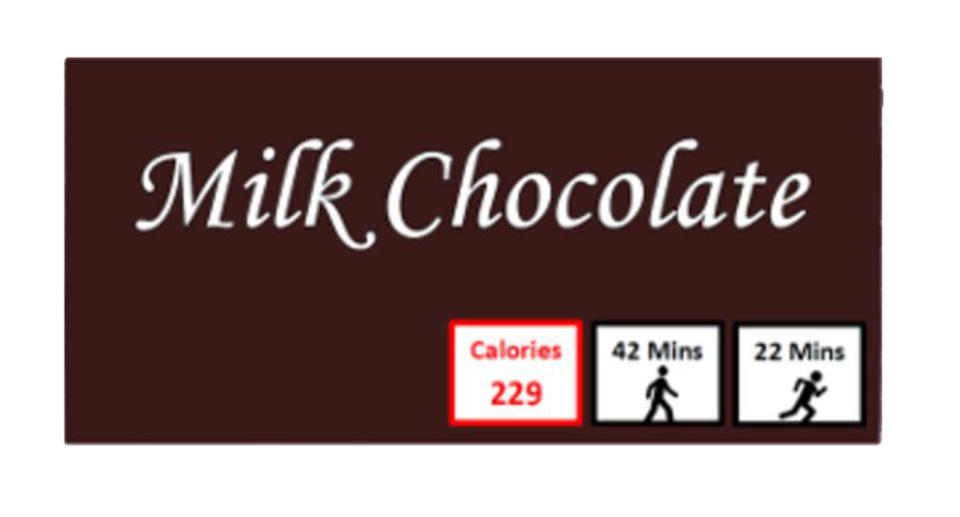Food labels 'should list the exercise required to burn the calories'
![Should unhealthy food be labelled with how much exercise it takes to burn it off? [Photo: Getty]](https://s.yimg.com/ny/api/res/1.2/FiaQ.VibRx38T3aLqvhKrA--/YXBwaWQ9aGlnaGxhbmRlcjt3PTEyNDI7aD04Mjg-/https://media-mbst-pub-ue1.s3.amazonaws.com/creatr-uploaded-images/2019-12/d4580490-1bff-11ea-bffe-76b3d6f9b087)
Experts are calling for food labels to state the amount of exercise required to burn off the calories consumed.
Scientists from Loughborough University argue the existing system of listing calories and nutritional content is difficult for the public to understand, with little evidence it encourages customers to opt for healthier options.
They predict listing how many minutes or miles of exercise is needed to cancel out the calories consumed could knock 195kcal off a person’s daily intake.
READ MORE: 5 Food Label Items You Need to Start Reading
For example, a small chocolate bar - typically 229kcal - requires around 42 minutes of walking or 22 minutes of running to burn off.
The scientists believe so-called physical activity calorie equivalent or expenditure (PACE) labelling could help combat the UK’s growing obesity problem.

In England alone, nearly a third (29%) of adults carried a dangerous amount of weight in 2017, up from 26% the year before, NHS Digital statistics show.
“We know the public routinely underestimate the number of calories that are in foods,” lead author Professor Amanda Daley told the BBC.
“So if you buy a chocolate muffin and it contains 500 calories, for example, that's about 50 minutes of running.
“It's about educating the public that when you consume foods, there is an energy cost, so they can think, 'Do I really want to spend two hours burning off that chocolate cake? Is the chocolate cake really worth it?’”
To uncover if PACE labels work, the scientists analysed 14 studies that looked at the effectiveness of the approach.
READ MORE: If You Haven't Noticed, The Label on All Your Food Is Changing
Results, published in the Journal of Epidemiology & Community Health, suggest “exercise labelling” on food, drink and menus cut the calories consumed per meal by an average of 65kcal.
Compared with no such labelling, the approach reduced calorie consumption by between 80kcal and 100kcal.
Assuming a person eats three meals and two snacks over 24 hours, the scientists predict PACE labelling could knock 200 calories off a person’s daily intake.
“PACE labelling shows some promise in reducing the number of calories selected from menus, as well as the number of calories and the amount of food (grams) consumed,” they wrote.
“PACE labelling is a simple strategy that could be easily included on food/beverage packaging by manufacturers, on shelving price labels in supermarkets, and/or in menus in restaurants/fast-food outlets.
“When a consumer sees a visual symbol that denotes it will take four hours to walk off a pizza and only 15 minutes to burn off a salad, this in theory should create an awareness of the ‘energy cost’ of food/drink.
READ MORE: Four in five adolescents aren't exercising enough, WHO warns
“Public health agencies may want to consider the possibility of including policies to promote [it] as a strategy that contributes to the prevention and treatment of obesity and related diseases.”
Evidence suggests even cutting 100 calories off your daily intake can help curb obesity when combined with exercise.
The Royal Society for Public Health has previously supported PACE labels, however, evidence supporting it was limited.
The Loughborough scientists stress the studies they looked at were small with varied methods.


